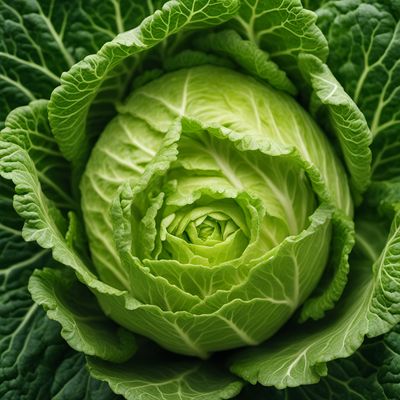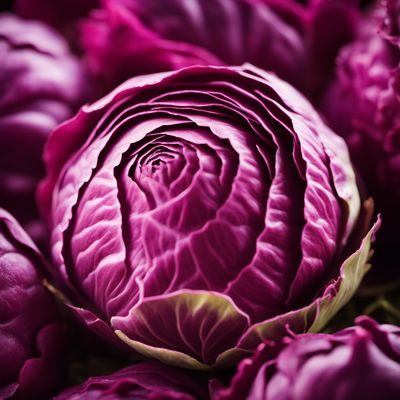
Ingredient
Head cabbages and similar-
Versatile Cabbage Delights
Head cabbages and similar varieties are large, round vegetables with tightly packed leaves that form a dense head. They have a mild and slightly sweet flavor, with a crisp and crunchy texture. The outer leaves are typically darker in color, while the inner leaves are lighter and more tender. Head cabbages can range in size from small to large, and their color can vary from green to purple depending on the variety.
Origins and history
Cabbage has a long history that can be traced back to ancient civilizations such as the Egyptians, Greeks, and Romans. It was highly valued for its nutritional properties and versatility in cooking. Today, head cabbages and similar varieties are cultivated worldwide and are a common ingredient in dishes from various cuisines. They are particularly popular in Eastern European, Asian, and Mediterranean cuisines.
Nutritional information
Head cabbages and similar varieties are low in calories and fat, making them a healthy addition to meals. They are also a good source of dietary fiber, vitamin C, vitamin K, and various minerals. Additionally, they contain antioxidants and phytochemicals that contribute to overall health and well-being.
Allergens
Head cabbages and similar varieties are not commonly associated with allergenic reactions. However, individuals with specific allergies to cruciferous vegetables should exercise caution and consult with a healthcare professional if necessary.
How to select
When selecting head cabbages and similar varieties, look for firm and compact heads with crisp leaves. Avoid cabbages with wilted or discolored leaves, as they may indicate poor quality or age. The outer leaves should be intact and free from blemishes or signs of damage. Additionally, choose cabbages that feel heavy for their size, as this indicates freshness and moisture content.
Storage recommendations
To prolong the freshness of head cabbages and similar varieties, store them in the refrigerator. Wrap the whole cabbage or cut portions tightly in plastic wrap or place them in a sealed plastic bag to prevent moisture loss and maintain crispness. Avoid storing them near ethylene-producing fruits, as this can accelerate spoilage. Use within a week for optimal quality.
How to produce
Head cabbages and similar varieties can be easily grown in home gardens or small-scale farms. They thrive in cool climates and require well-drained soil and regular watering. Plant the seeds or seedlings in a sunny spot and provide adequate space for the heads to develop. Regularly monitor for pests and diseases, and harvest the cabbages when they reach the desired size and firmness.
Preparation tips
Head cabbages and similar varieties can be prepared in various ways, including raw, cooked, or fermented. They can be shredded and used in salads, coleslaws, or stir-fries, or added to soups, stews, and casseroles. Cabbage leaves can also be used as wrappers for stuffing or as a substitute for tortillas in wraps. Fermented cabbage, such as sauerkraut or kimchi, offers a tangy and probiotic-rich option that can be enjoyed on its own or as a condiment.
Culinary uses
Head cabbages and similar varieties are widely used in various cuisines around the world. They are a key ingredient in dishes such as coleslaw, sauerkraut, kimchi, stuffed cabbage rolls, and cabbage soup. Their versatility allows them to be incorporated into a wide range of recipes, adding texture, flavor, and nutritional value.
Availability
Head cabbages and similar varieties are cultivated in many regions globally, including Europe, Asia, North America, and South America. They are commonly available in grocery stores, supermarkets, and farmers markets throughout the year.



